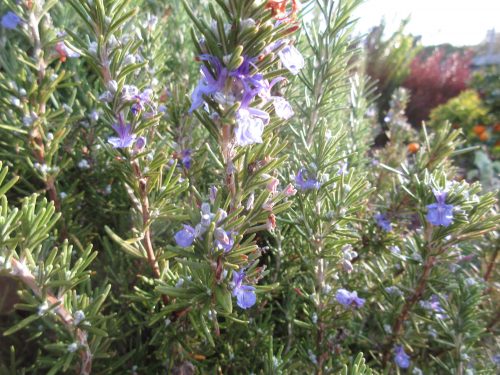Let us depart from conventional wisdom of turning cover crops into the soil beneath. Let us instead take a lesson from John Jeavons’ GROW BIOINTENSIVE method and use the cover crops as compost materials elsewhere.
Buy why, you cry? Why can’t I just turn my cover crop over into the soil, cover it with finished compost or manure, water it and wait? It’s that last part…the waiting.

You’ve already waited for the cover crop to grow, then flower, so why wait any longer to use the space for growing spring crops? Here’s Jeavons’ theory: if you cut down the crops and use them in the compost bin, the bed is now immediately available to plant your next crop.
Not to mention, with these high nitrogen crops you just cut down, your compost bin will cook. It’s a chance to build a compost pile all at once, get the temperature up and really make good compost.
Here’s what we do:
Cut – we cut down the crops below the soil level, leaving the nitrogen-rich roots in place
Dry down – we are fortunate enough to have a shredder, but it gets clogged with freshly cut greens, so we leave them out in the sun for a day or two to lose some of the moisture

Shred – then we pull out our trusty shredder and go to work chopping oats, fava beans, hairy vetch and peas into small bits (more surface area means quicker breakdown and hotter compost)
Layer – we alternate layers of browns and greens with some soil or existing compost. Water well between layers.
Watch – we have a compost thermometer to watch the temperature climb. When it reaches its peak (hopefully around 160 degrees) we turn the pile.
In the meanwhile, the bed is ready for a layer of fresh compost and new plantings or seeds. The roots will breakdown over time to release stored nitrogen to the new plants, and you lose no time in the garden.




Pingback: YouTube: How to Turn Under Cover Crops and Why It's Worth Doing
Pingback: Active Batch Composting - Gardenerd